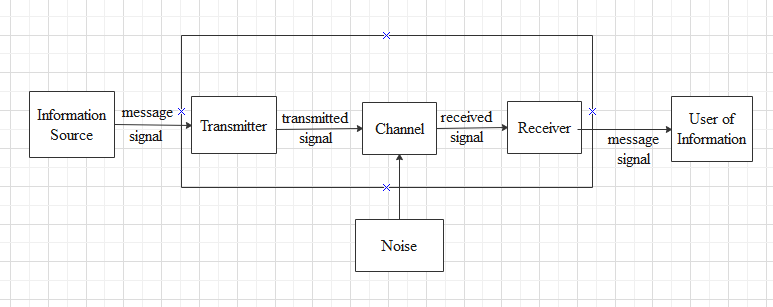
Draw a block diagram of a generalized communication system.
Answer
487.8k+ views
- Hint: Find the constituent instruments or material for a communication to be possible. Make a diagram by finding them in serial order. Define the work of each component in the diagram which can make it possible to form a suitable communication system.
Complete step-by-step solution -

The communication system is a group of instruments working together to transfer information from a sender to a receiver.
In the figure we have a block diagram of a generalized communication system. In general, we have a transmitter of the signal, one channel through which the signal is transmitted and one receiver which received the signal. We have other components also to make the communication process suitable.
From the information source the information is converted into electrical form suitable for transmission called the signal.
The transmitter processes the incoming message signal to make it suitable for transmission through the channel.
Noise can be defined as the unwanted signal that tends to disturb the original signal coming from the transmitter. The source of noise can be inside or outside the system.
The receiver obtains the desired message or information from the received signal at the channel output.
We use a transducer in the communication system which can convert any form of energy into electrical energy or signal.
Note: There are two modes of communication – one is point to point communication and the other is broadcast communication.
In a point to point communication system we have only one transmitter and one receiver. But in the broadcast communication system we have one transmitter but more than one receiver for that transmitter.
Complete step-by-step solution -

The communication system is a group of instruments working together to transfer information from a sender to a receiver.
In the figure we have a block diagram of a generalized communication system. In general, we have a transmitter of the signal, one channel through which the signal is transmitted and one receiver which received the signal. We have other components also to make the communication process suitable.
From the information source the information is converted into electrical form suitable for transmission called the signal.
The transmitter processes the incoming message signal to make it suitable for transmission through the channel.
Noise can be defined as the unwanted signal that tends to disturb the original signal coming from the transmitter. The source of noise can be inside or outside the system.
The receiver obtains the desired message or information from the received signal at the channel output.
We use a transducer in the communication system which can convert any form of energy into electrical energy or signal.
Note: There are two modes of communication – one is point to point communication and the other is broadcast communication.
In a point to point communication system we have only one transmitter and one receiver. But in the broadcast communication system we have one transmitter but more than one receiver for that transmitter.
Recently Updated Pages
Using the following information to help you answer class 12 chemistry CBSE

Basicity of sulphurous acid and sulphuric acid are

Master Class 12 Economics: Engaging Questions & Answers for Success

Master Class 12 Maths: Engaging Questions & Answers for Success

Master Class 12 Biology: Engaging Questions & Answers for Success

Master Class 12 Physics: Engaging Questions & Answers for Success

Trending doubts
Which are the Top 10 Largest Countries of the World?

Differentiate between homogeneous and heterogeneous class 12 chemistry CBSE

Draw a labelled sketch of the human eye class 12 physics CBSE

What is the Full Form of PVC, PET, HDPE, LDPE, PP and PS ?

What is a transformer Explain the principle construction class 12 physics CBSE

What are the major means of transport Explain each class 12 social science CBSE




